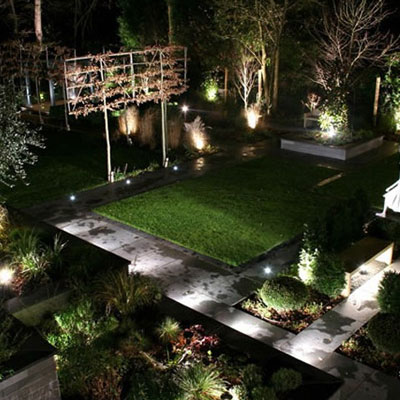Garden Lightings
Garden lighting maintanance can be an important aspect of garden design. In most cases, various types of lighting techniques may be
classified and defined by heights: safety lighting, uplighting, and downlighting.
Safety lighting is the most practical application.
garden lighting refers to the use of outdoor illumination of private gardens and public landscapes; for the enhancement and purposes of
- safety
- nighttime aesthetics
- accessibility
- security
The public landscape and gardens have been illuminated for as long as interior structures have - for beauty,
security, circulation, and social occasions; since ancient times by firelight from wood, candles, and animal-plant oil fells in torches, sconces and lanterns.
But Now days using illumination fuels, the technology has then been used outdoors and in gardens. The increasing use of LEDs,
solar power, low voltage fixtures, energy efficient lamps, and energy-saving lighting design are examples of innovation in the field.
There are many different types of landscape lighting systems, controls and switching, wiring connections, fixture types,
functions-purposes-styles, and light sources.
Components can include:
- Power
- Electric wiring
- Light fixtures - fixed location - line voltage (120 V U.S. or 240 V Europe) and low voltage (12 V U.S.)
- Light fixtures - low voltage (12V U.S.) - modest location adjustments
- Rope lighting - fiber optics
Underwater
a water feature is one or more items from a range of fountains, jeux d'eau, pools, ponds, rills, artificial waterfalls,
and streams. Before the 18th century they were usually powered by gravity, though the famous Hanging Gardens of Babylon are
described by Strabo as supplied by an Archimedean screw and other examples were supplied with water using hydraulic rams.
Light sources - underwater
- fixed mount fixtures - i.e.: pool wall light
- movable uplights
- fiber optic lights
- floating fixture lights - rechargeable battery & solar photovoltaic


